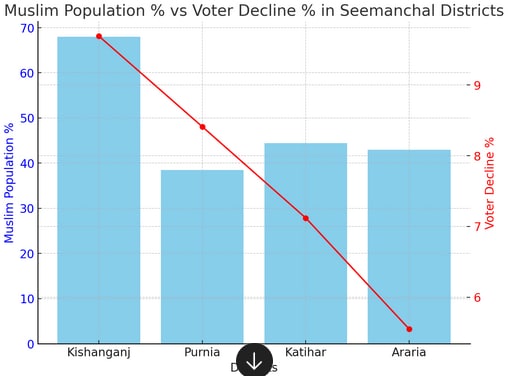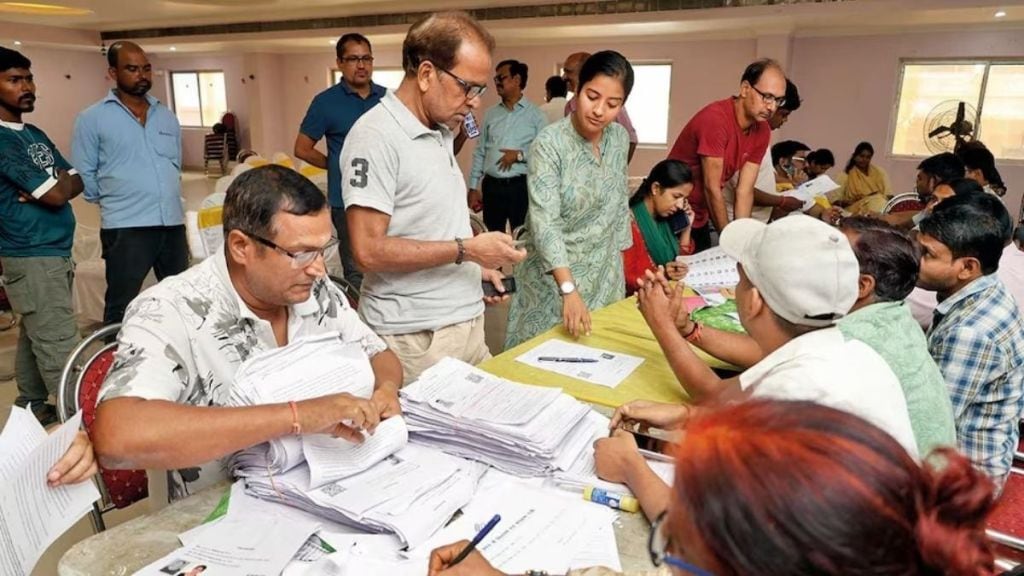Bihar Elections 2025: An analysis of the final Bihar electoral rolls, released on Tuesday after the Election Commission’s Special Intensive Revision (SIR) drive, shows that all 38 districts saw a drop in the total number of voters. Gopalganj, Kishanganj, and Purnia recorded the largest declines.
Between the first draft rolls, published on August 1 as part of the SIR drive, and the final rolls on Tuesday, the number of voters slightly increased in most districts. District-level data was shared by district election officials.
The largest drops were observed in districts bordering Nepal, many of which have a significant Muslim population. On the other hand, Patna, the state’s most populous district, recorded one of the lowest declines, at 4.59%. Sources noted that very few deletions in the draft rolls were due to failure to prove citizenship, raising questions about the ECn’s claim that the SIR drive aimed to remove “illegal immigrants”.
Gopalganj, Purnia, Kishanganj see decline in number of voters
In Gopalganj, the voter count fell from 20.56 lakh on June 24 (before the SIR) to 17.46 lakh in the August 1 draft rolls, a drop of 15.1%. The number then rose slightly by 3.49% to 18.07 lakh in the final rolls, making the overall decline 12.13%, the highest in the state. Gopalganj also has a sizable Muslim population of 17.02%. Kishanganj and Purnia followed, with voter declines of 9.69% and 8.41%, respectively.
Seemanchal and other border districts most affected
Kishanganj and Purnia are part of the Seemanchal region along the West Bengal border. Kishanganj is the only district in Bihar where Muslims are the majority, making up about 68% of the population, according to the 2011 Census. Purnia has the fourth-highest Muslim population at about 38%. In nearby districts, Katihar and Araria saw voter declines of 7.12% and 5.55%, with Muslim populations of around 44% and 43%, respectively.

The graph above compares Muslim population percentage (in blue bars) with voter decline percentage (in red line) across Kishanganj, Purnia, Katihar, and Araria.
Other border districts like Madhubani, East Champaran, Sitamarhi, Supaul, and West Champaran also saw voter numbers fall by more than 5%. Districts with a Muslim population of over 15%, such as Madhubani (18%), Bhagalpur (18%), and East Champaran (19%), recorded declines of 7 to 8%.
Only 10 districts experienced less than a 5% drop, including Patna. Six of these are among Bihar’s smallest districts by population. East Champaran, the second-most populous district, saw a decline of 7.08%, while Madhubani and Muzaffarpur dropped by 7.9% and 5.59%, respectively.
As for voter additions between the August 1 draft and the September 30 final rolls, Purnia saw the highest increase at 4.16%, while Katihar had the lowest at 1.24%, reflecting the claims and objections filed during this period.


